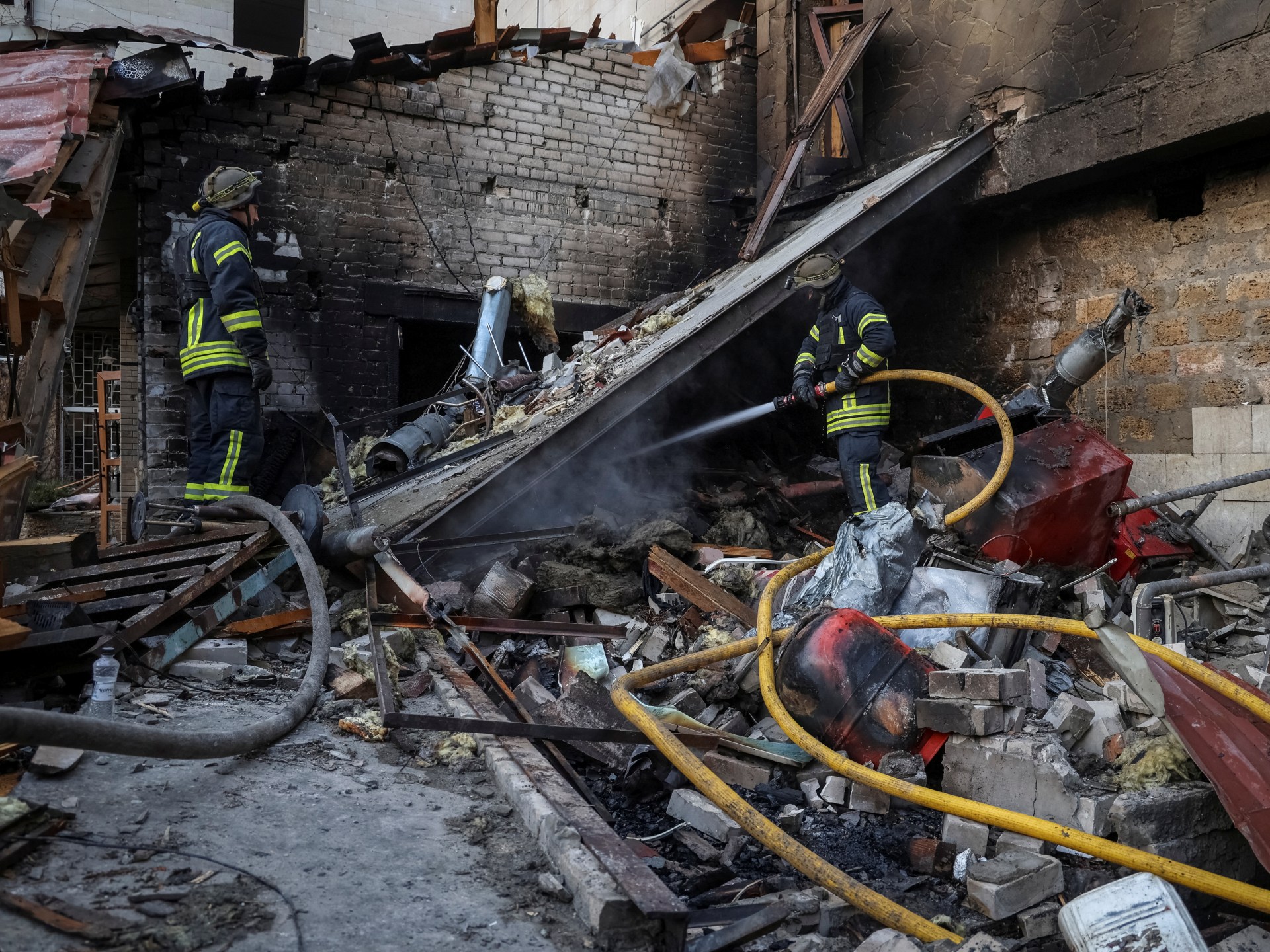
RAFAH, Gaza Strip (AP) — Desperate Palestinians fleeing Israel’s increasing ground offensive crowded into an ever-shrinking area of the Gaza Strip as the war between Israel and Hamas entered its third month on Friday. The United Nations warned that its relief operation was “in shambles” because no place in the besieged enclave was safe.
Israel’s military assault on Gaza, a tiny, densely populated area, has resulted in numerous civilian casualties and mass displacement and sparked international concern.
The Israeli army said Friday that the military struck about 450 targets in the Gaza Strip by air, sea and ground over the past day, a sign of the continued intensity of its campaign. Palestinian television channels reported airstrikes on various parts of the territory.
“Airstrikes and indiscriminate artillery shelling have continued intensely since last night until this morning,” said Hassan Al Najjar, a journalist who spoke by telephone from the northern Gaza Strip.
Earlier this week, U.N. Secretary-General Antonio Guterres used a rarely exercised power to warn the Security Council of an impending “humanitarian catastrophe,” and Arab and predominantly Muslim nations called for a vote on Friday on a council resolution calling for an immediate halt. Fire.
The United States, Israel’s closest ally, is likely to block any U.N. efforts to end fighting sparked by the deadly Oct. 7 attack by Hamas militants on southern Israel. Still, concerns about the devastation are growing in the United States. U.S. officials told Israel before expanding its ground offensive into the southern Gaza Strip several days ago that it needed to limit the death and displacement of civilians, saying too many Palestinians had been killed than much of Gaza City and the surrounding areas in the north were destroyed.
On Thursday, US Secretary of State Antony Blinken said in a phone call with Israeli Strategic Affairs Minister Ron Dermer that losses were still too high, a senior State Department official said. Blinken told Dermer that Israel also needs to do more to allow humanitarian aid into the Gaza Strip. The official spoke on condition of anonymity to discuss the private diplomatic discussion.
Israel insists it must dismantle the military capabilities of Hamas, which rules Gaza, and remove it from power after the group’s Oct. 7 attack.
In the first phase of the war, Israel’s air and ground assault focused on the northern half of the Gaza Strip, causing hundreds of thousands of residents to flee south. Heavy fighting has erupted in parts of the north in recent days as troops there arrested hundreds of Palestinian men.
In photos and videos released Thursday, dozens of men can be seen sitting in rows on a street in northern Gaza, stripped to their underwear and with their heads bowed, as Israeli troops guard them.
The images were the first to show such arrests during the war. Israeli military spokesman Daniel Hagari said troops had arrested and interrogated hundreds of people in Gaza suspected of having links to militants. U.N. monitors said troops were reportedly holding men and boys as young as 15 at a school hostel in the northern city of Beit Lahiya.
The war also saw a dramatic increase in deadly military attacks and a tightening of restrictions on Palestinian residents in the occupied West Bank. Israeli forces stormed a West Bank refugee camp on Friday to arrest suspected Palestinian militants, sparking fighting with local gunmen that killed six Palestinians, health officials said. The Israeli military did not respond to a request for comment on the operation.
Last week, Israeli forces expanded their ground offensive into the southern Gaza Strip, with a focus on Khan Younis, the territory’s second-largest city.
On Friday, the Palestinian Red Crescent Society said the Israeli air force had attacked a house opposite the society’s office in the southern Gaza town of Khan Younis. Details on the number of victims were not given.
Medhat Abbas, a health ministry spokesman in the Hamas-controlled Gaza Strip, reported an attack in the central Gaza town of Deir al-Balah, saying several people were killed and injured, but did not give exact numbers.
The military says it is making every effort to spare civilians and accuses Hamas of using them as human shields while the militants fight in densely populated residential areas.
As the entire Gaza Strip comes under military assault, tens of thousands of people displaced by the fighting have huddled in the border town of Rafah in Gaza’s far south and in Muwasi, a nearby stretch of barren coastline that Israel has declared a security zone.
Since the shelters were clearly overcrowded, many people pitched their tents on the side of the road leading from Rafah to Muwasi.
“Humanitarian actors … report extreme overcrowding and a lack of basic resources,” the United Nations Humanitarian Affairs Department said.
The ability of UN aid agencies to receive vital supplies has been “significantly impacted” in recent days, with trucks and staff stranded due to the fighting and telecommunications down, it said.
“We no longer have a humanitarian operation that could bear that name in southern Gaza,” UN humanitarian chief Martin Griffiths warned on Thursday. The pace of the Israeli military attack “has failed to provide a safe place for civilians in the southern Gaza Strip, which was a cornerstone of the humanitarian plan to protect civilians and thereby provide assistance to them. But without safe places, that plan lies in tatters.”
Israel has designated Muwasi on the territory’s Mediterranean coast as a safe zone for those seeking shelter from fighting between Israeli troops and Hamas militants. But the UN and aid organizations describe this as a poorly planned solution.
Israel’s campaign has killed more than 17,100 people in Gaza – 70% of them women and children – and injured more than 46,000, according to the territory’s health ministry. Many more are trapped under rubble. The ministry does not distinguish between civilian and combatant deaths.
Hamas and other militants killed about 1,200 people, mostly civilians, and took more than 240 hostage in the Oct. 7 attack. An estimated 138 hostages remain in Gaza, mostly soldiers and civilians, after more than 100 were released, most during a ceasefire last month.
___
Mroue contributed from Beirut and Becatoros from Athens, Greece. Associated Press writer Matthew Lee in Washington contributed.
___
Complete AP coverage at https://apnews.com/hub/israel-hamas-war.






Recent Comments